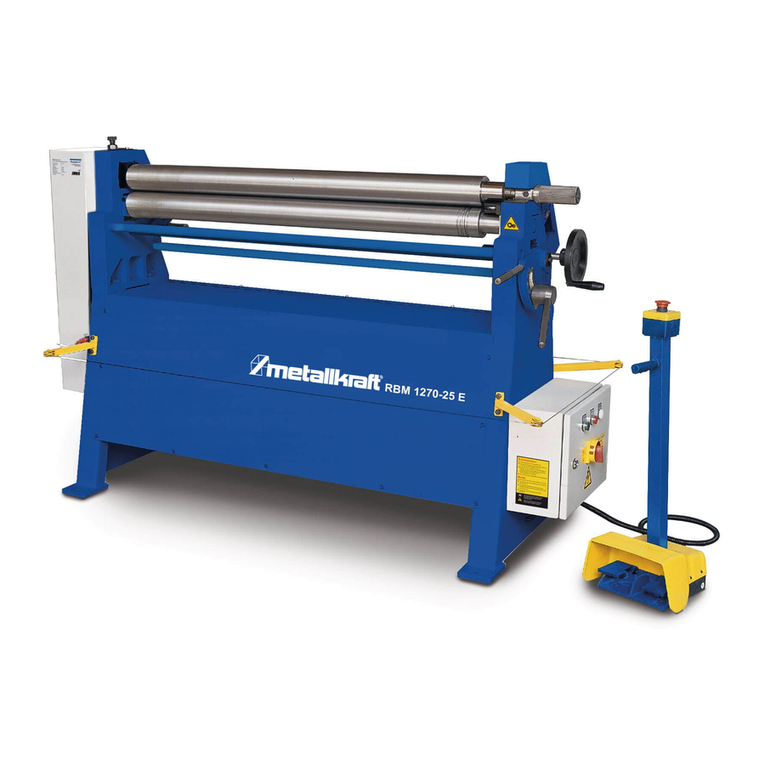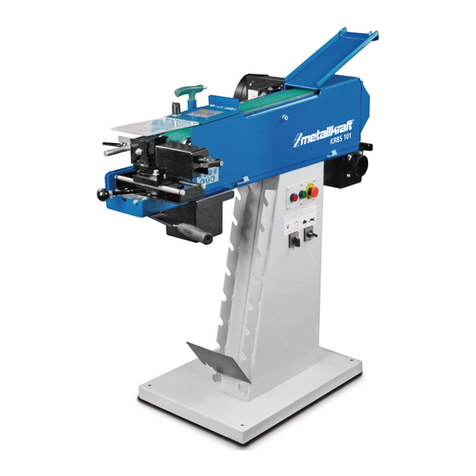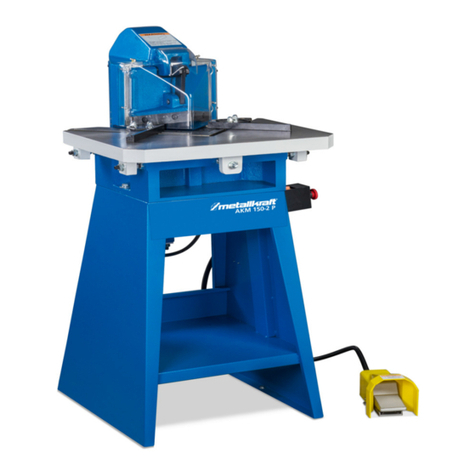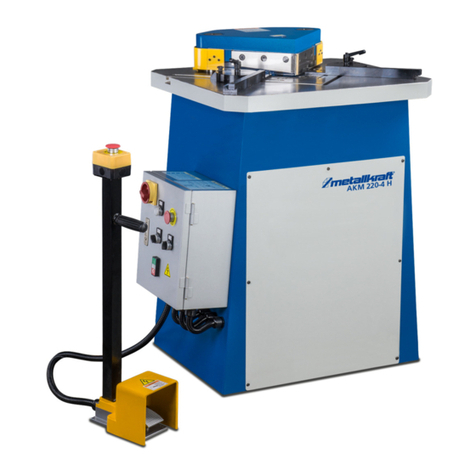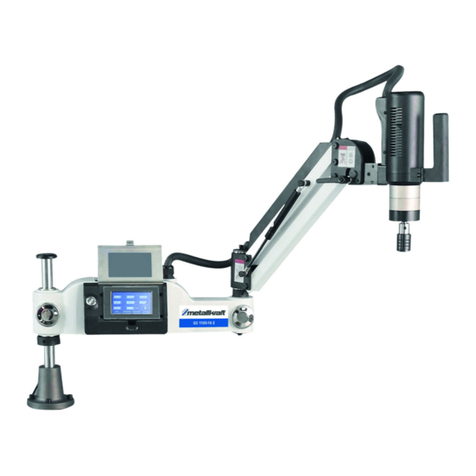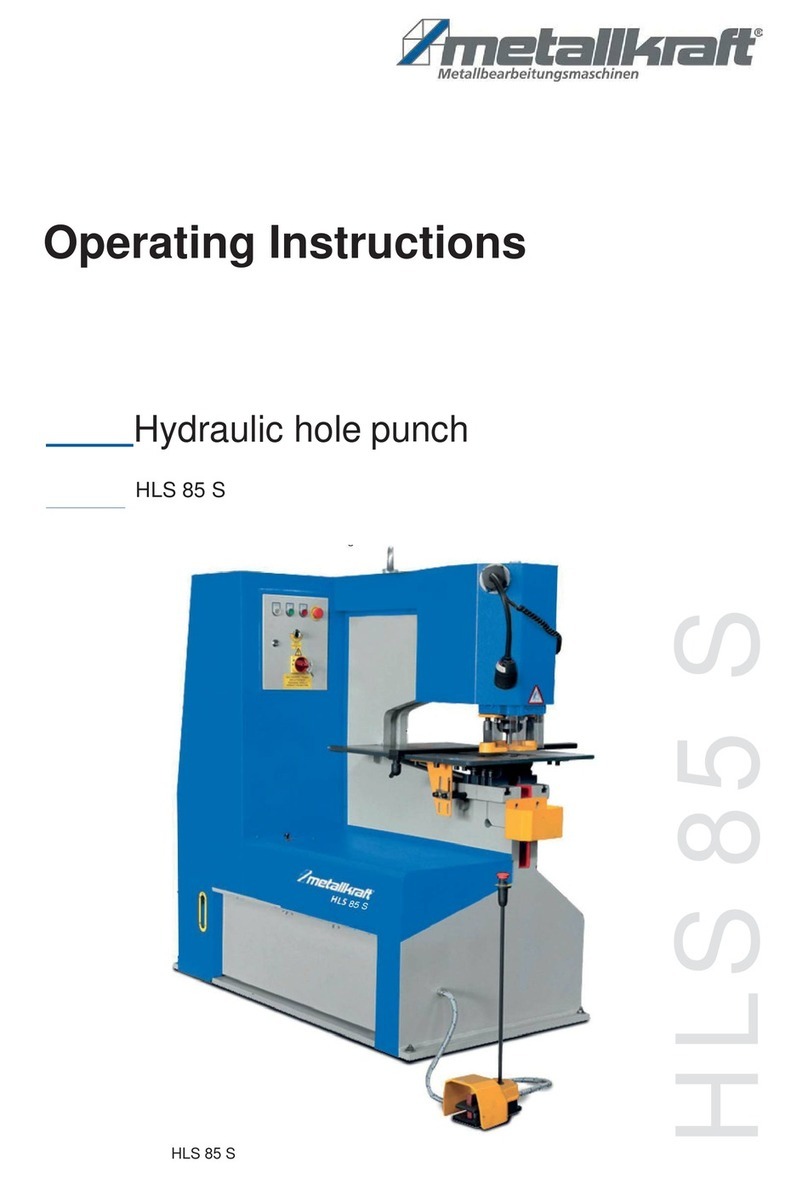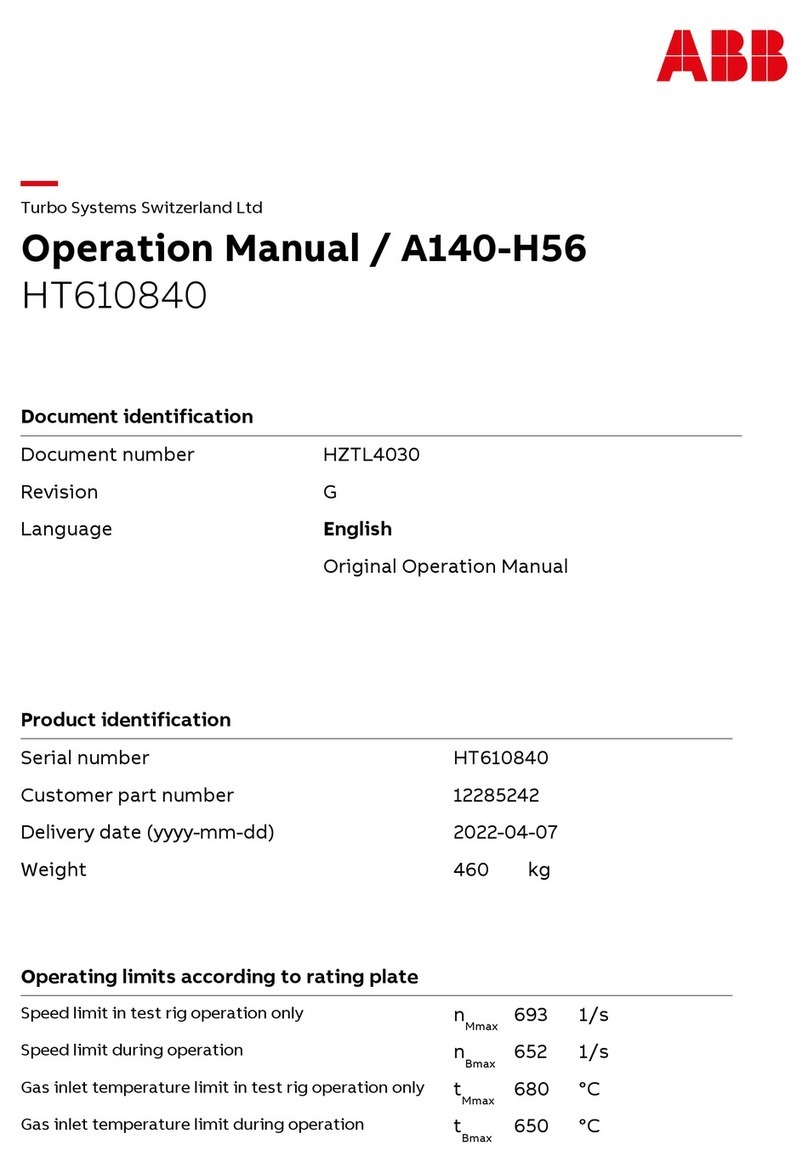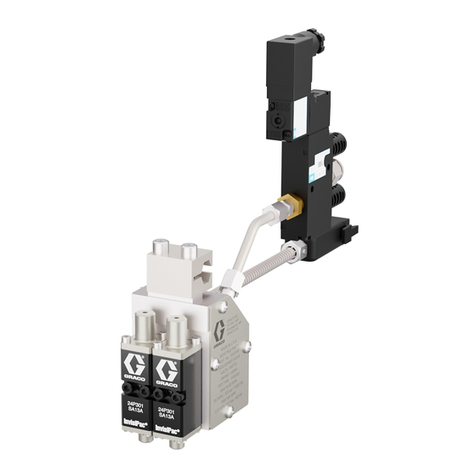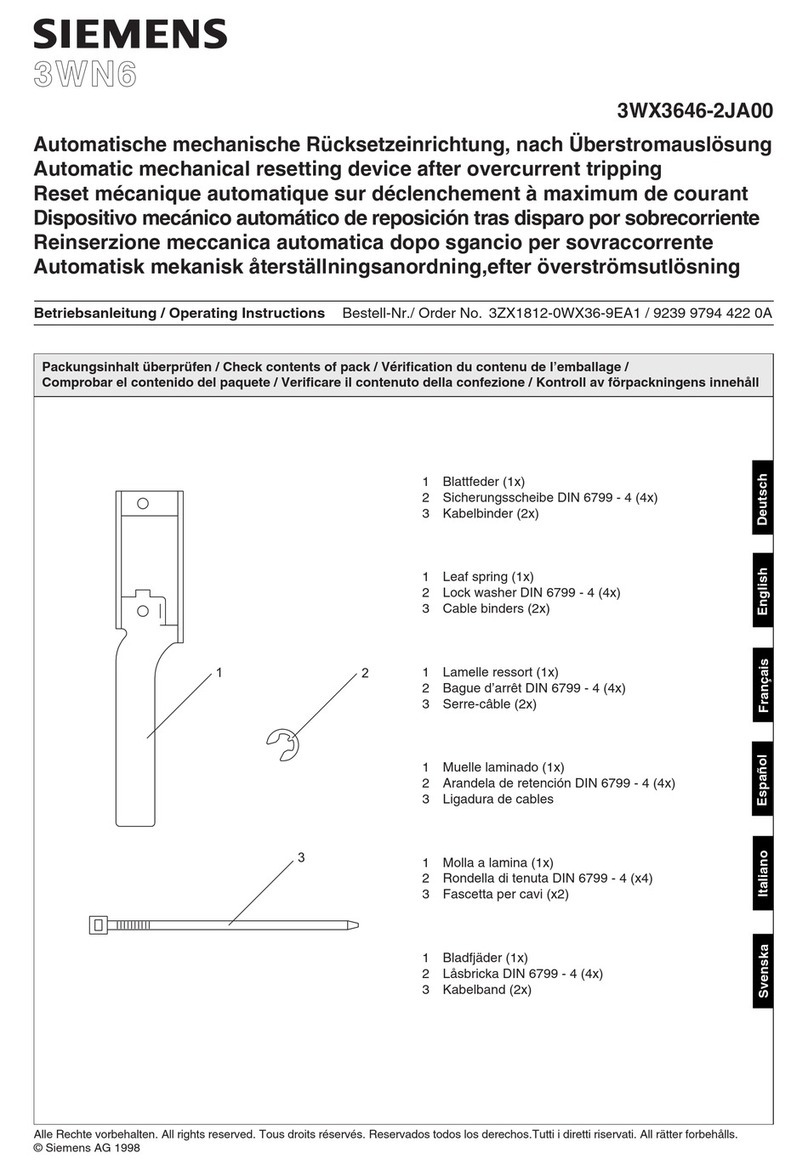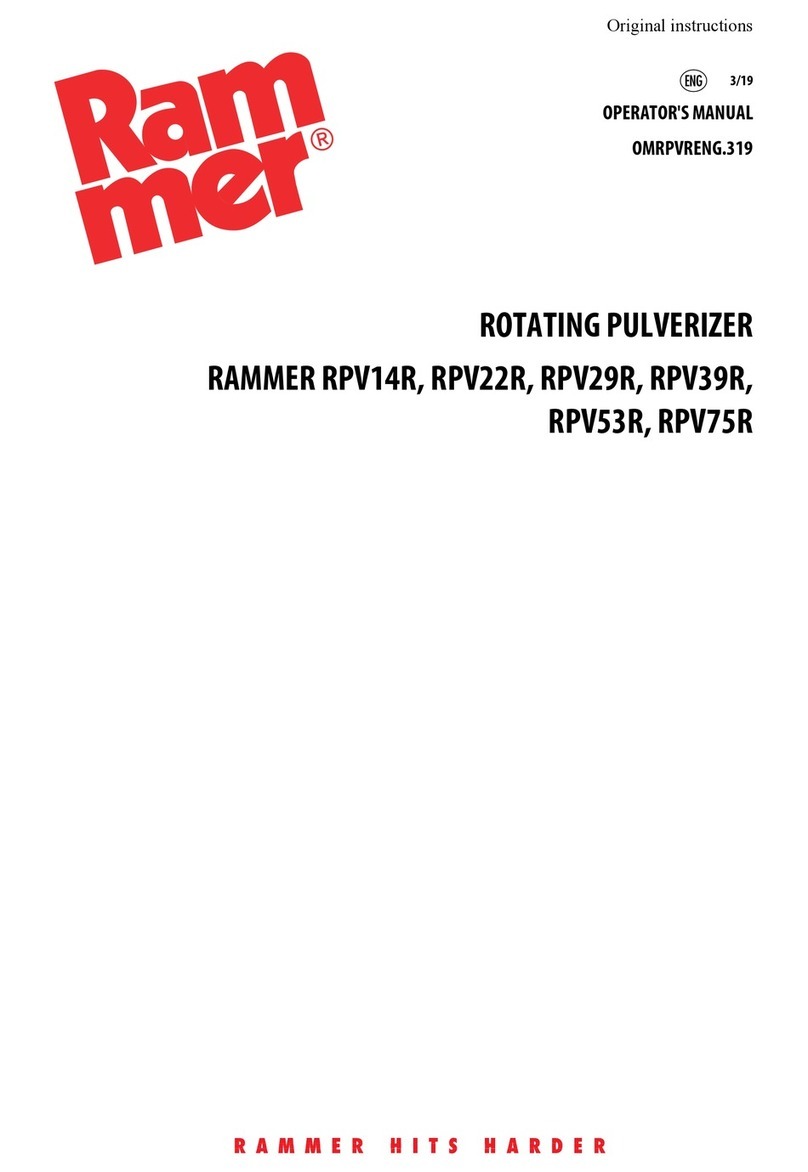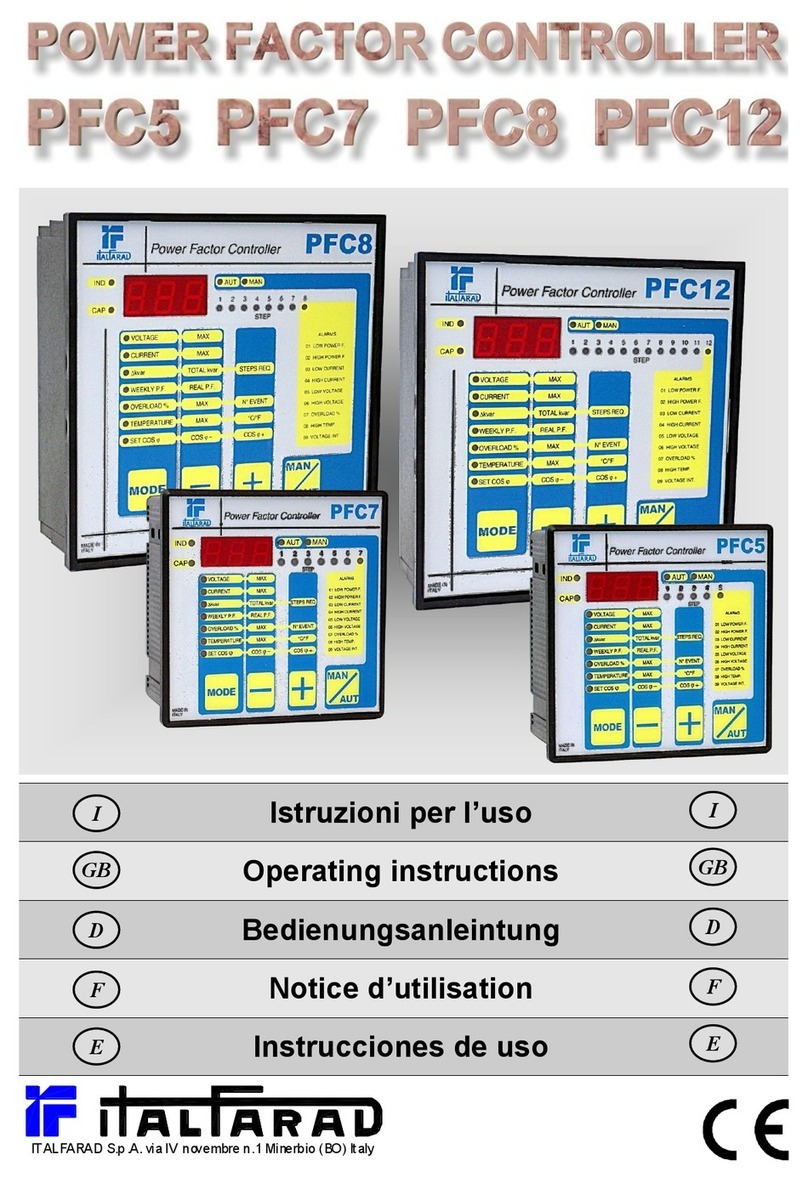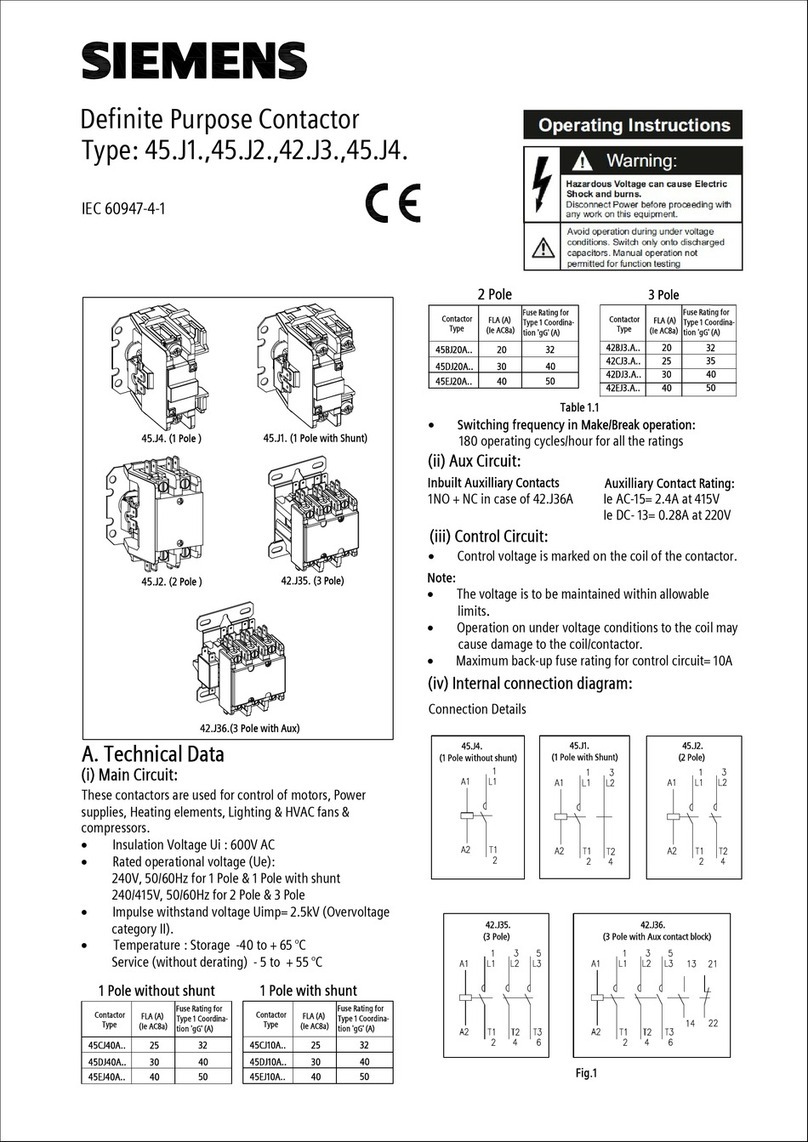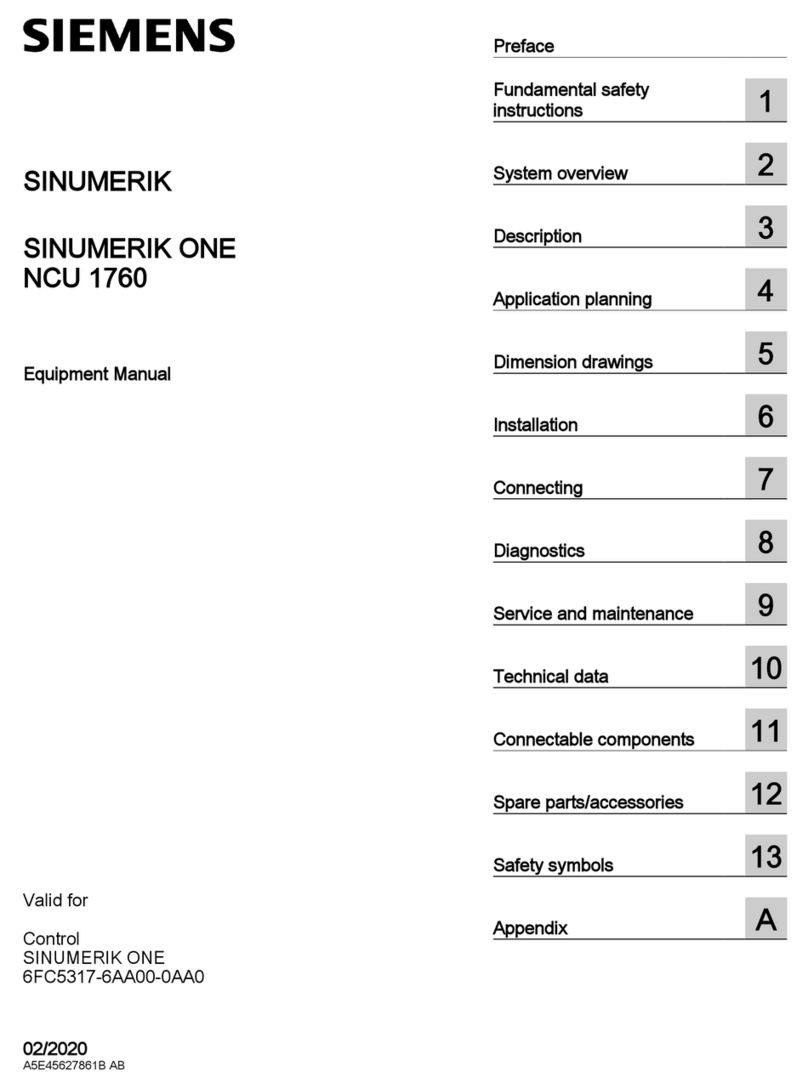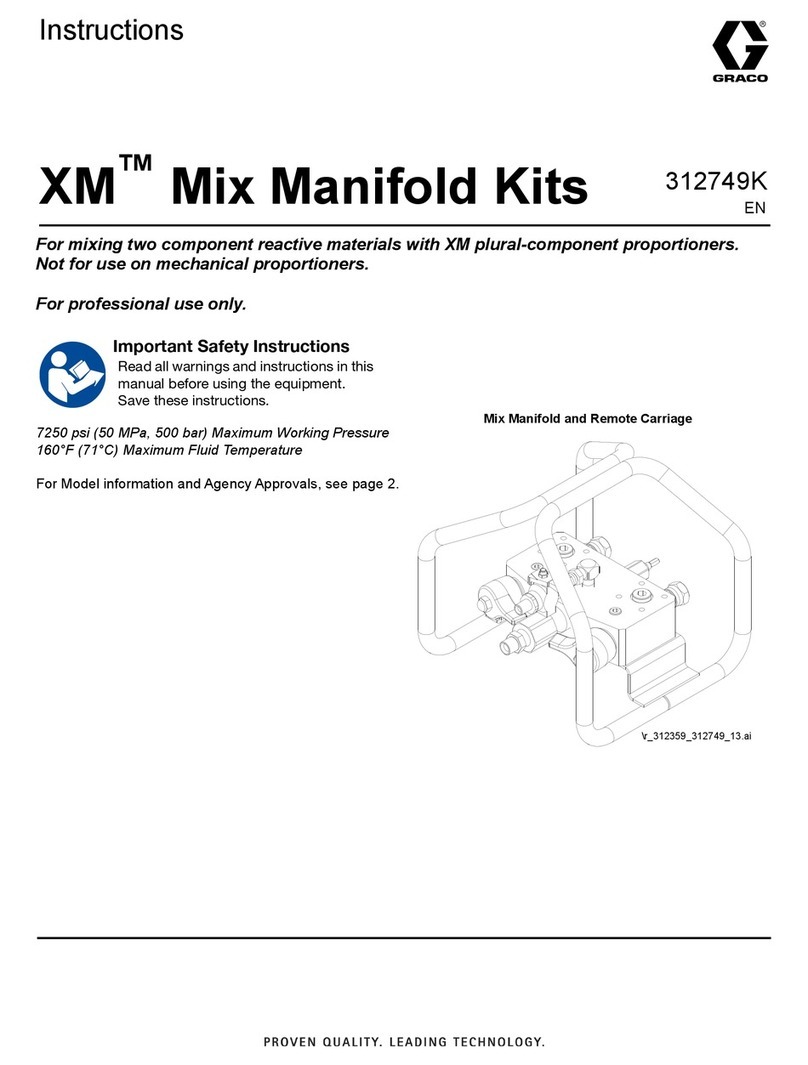Metallkraft RBM 305 User manual

Operating Instructions
Plate rolling machine
RBM 305
RBM 305
RBM 305

2 RBM 305 | Version 2.02
Imprint
Product identification
Plate rolling machine Item number
RBM 305 3780112
Manufacturer
türmer Maschinen GmbH
Dr.-Robert-Pfleger- tr. 26
D-96103 Hallstadt/Bamberg
Fax: 0049 (0) 951 96555 - 55
E-Mail: [email protected]
Internet: www.metallkraft.de
Indications regarding the operating instructions
Original instructions
Edition: 29.08.2018
Version: 2.02
Language: English
Author: FL
Indications regarding the copyright
Copyright © 2018 türmer Maschinen GmbH, Hallstadt,
Germany.
The contents of these operating instructions are the sole
property of the company türmer.
Passing on as well as copying of this document, the use
and distribution of its content are prohibited if not explic-
itly permitted. Contraventions are liable to compensa-
tion.
ubject to technical modifications and error.
Content
1 Introduction ............................................................. 3
1.1 Copyright ............................................................ 3
1.2 Customer service................................................ 3
1.3 Limitation of liability............................................. 3
2 Safety ....................................................................... 3
2.1 ymbol explanation ............................................ 3
2.2 Requirements to staff.......................................... 4
2.3 Personal protective equipment ........................... 4
2.4 General safety regulations.................................. 5
2.5 afety labels on the Plate rolling machine.......... 5
3 Intended use............................................................ 5
3.1 Unintended use................................................... 6
3.2 Residual risks ..................................................... 6
4 Technical Data.........................................................
5 Transport, packaging, storage...............................
5.1 Transport ............................................................ 6
5.2 Packaging........................................................... 6
5.3 torage ............................................................... 6
Description of the Device ....................................... 7
6.1 cope of delivery ................................................ 7
7 Assembly ................................................................. 7
7.1 etting up the machine ....................................... 7
7.2 Hazardous Areas................................................ 8
7.3 Lubricate bearings .............................................. 8
8 Operation ................................................................. 8
8.1 Work flow............................................................ 9
8.2 etting the sheet thickness................................. 9
8.3 Adjusting the guide pulley................................. 10
8.4 bending process ............................................... 10
8.5 Bending wires ................................................... 12
9 Care, maintenance and repair.............................. 12
9.1 Cleaning and Maintenance............................... 13
9.2 Repair ............................................................... 13
9.3 Lubrication schedule......................................... 13
9.4 Troubleshooting................................................ 13
10 Disposal, recycling of used devices ................. 14
10.1 Decommissioning ........................................... 14
10.2 Disposal of lubricants...................................... 14
11 Spare parts .......................................................... 14
11.1 Ordering spare parts....................................... 14
12 Spare parts drawing............................................ 15
13 Declaration........................................................... 1
14 Notes .................................................................... 17

Introduction
RBM 305 | Version 2.02 3
1 Introduction
You have made a good choice by purchasing the
METALLKRAFT Plate rolling Machine
Read the operating manual thoroughly before com-
missioning the machine.
It gives you information about the proper commissioning,
intended use and safe and efficient operation and main-
tenance of your Plate rolling Machine.
The operating manual is part of the Plate rolling Machine
package. Always keep this operating manual in the loca-
tion where your Plate rolling Machine is being operated.
All local accident prevention regulations and general
safety instructions for the operating range of your Plate
rolling Machine must also be complied with.
1.1 Copyright
The contents of these instructions are copyright. They
may be used in conjunction with the operation of the
Plate rolling Machine. Any application beyond those de-
scribed is not permitted without the written approval of
türmer GmbH. For the protection of our products, we
shall register trademark, patent and design rights, as this
is possible in individual cases. We strongly oppose any
infringement of our intellectual property
1.2 Customer service
Please contact your dealer if you have questions con-
cerning your Plate rolling Machine or if you need techni-
cal advice. They will help you with specialist information
and expert advice.
Germany:
türmer Maschinen GmbH
Dr.-Robert-Pfleger- tr. 26
D-96103 Hallstadt
Repair service:
Fax: 0049 (0) 951 96555-111
Email: [email protected]
Spare part orders:
Fax: 0049 (0) 951 96555-119
Email: [email protected]
We are always interested in valuable experience and
knowledge gained from using the application-which then
could be shared and be valuable to develop our products
even further.
1.3 Limitation of liability
All information and notes in these operating instructions
were summarised while taking applicable standards and
rules, the state-of-the-art technology and our long-term
knowledge and experiences into consideration.
In the following cases the manufacturer is not liable for
damages:
- Non-observance of the operating instructions,
- Inappropriate use
- Use of untrained staff,
- unauthorised modifications
- technical changes,
- Use of not allowed spare parts.
The actual scope of delivery may deviate from the expla-
nations and presentations described here in case of spe-
cial models, when using additional ordering options or
due to latest technical modifications.
The obligations agreed in the delivery contract, the gen-
eral terms and conditions as well as the delivery condi-
tions of the manufacturer and the legal regulations at the
time of the conclusion of the contract are applicable.
2 Safety
This section provides an overview of all important safety
packages for the protection of operating personnel as
well as for safe and fault-free operation. Other task-
based safety notes are included in the paragraphs of the
individual phases of life.
2.1 Symbol explanation
Safety instructions
The safety notes in these operating instructions are high-
lighted by symbols. The safety notes are introduced by
signal words which express the concern of the risk.
DANGER!
This combination of symbol and signal words indi-
cates an imminently dangerous situation which may
lead to death or severe injury if not avoided.
WARNING!
This combination of symbol and signal words indi-
cates a potentially dangerous situation which may
lead to death or severe injury if not avoided.

4 RBM 305 | Version 2.02
Safety
Tips and recommendations
It is necessary to observe the safety notes written in
these operating instructions in order to reduce the risk of
personal injuries and damages to property.
2.2 Requirements to staff
Qualifications
The different tasks described in this manual represent
different requirements to the qualification of the persons
entrusted with these tasks.
Only persons reliable working procedures can be ex-
pected from, are allowed to perform all works. Persons
the responsiveness of which is affected by e. g. drugs,
alcohol or medication, are not allowed to work with the
machine.
The qualifications of the personnel for the different tasks
are mentioned below:
Operator
The operator is instructed by the operating company
about the assigned tasks and possible risks in case of
improper behaviour. Any tasks which need to be per-
formed beyond the operation in the standard mode must
only be performed by the operator if it is indicated in
these instructions and if the operating company expres-
sively commissioned the operator.
Electrically qualified person
Electrically qualified person is due to their professional
training, knowledge and experience as well as knowl-
edge of the relevant standards and regulations, in a posi-
tion to carry out work on the electrical systems and to in-
dependently recognize and avoid possible dangers.
Qualified personnel
Due to their professional training, knowledge and experi-
ence as well as their knowledge of relevant regulations
the specialist staff is able to perform the assigned tasks
and to recognise and avoid any possible dangers them-
selves.
Manufacturer
Certain works may only be performed by specialist per-
sonnel of the manufacturer. Other personnel is not au-
thorized to perform these works. Please contact our cus-
tomer service for the execution of all arising work.
2.3 Personal protective equipment
The personal protective equipment serves to protect per-
sons against impairments of safety and health while
working. The staff member has to wear personal protec-
tive equipment while performing different tasks on and
with the machine which are indicated in the individual
paragraphs of these instructions.
The personal protective equipment is explained in the
following paragraph:
CAUTION!
This combination of symbol and signal words indi-
cates a potentially dangerous situation which may
lead to slight or minor injury if not avoided.
ATTENTION!
This combination of symbol and signal words indi-
cates a possibly dangerous situation which may lead
to property and environmental damages if they are
not avoided.
NOTE!
This combination of symbol and signal words indi-
cates a potentially dangerous situation which may
lead to material or environmental damage if not
avoided.
Tips and recommendations
This symbol highlights useful tips and recommenda-
tions as well as information for an efficient and trou-
ble-free operation.
WARNING!
Danger in case of insufficient quali-
fication of the staff!
Insufficiently qualified persons cannot estimate
the risks while using the machine and expose
themselves and others to the danger of severe or
lethal injuries.
- Have all works only performed by qualified persons.
- Keep insufficiently qualified persons out of the work-
ing area.
Eye Protection
The Eye protection protect the eyes from flying parts
and liquid splashes.
Protective gloves
The protective gloves serve to protect the hands
against sharp components as well as against fric-
tion, abrasions or deep injuries.

Intended use
RBM 305 | Version 2.02 5
2.4 General safety regulations
Please note the following:
- Use the guards and secure them securely. Never work
without protections and get them working.
- Always keep the machine and its working environment
clean. Ensure adequate lighting.
- The bending machine may not be modified in its design
and may not be used for purposes other than those fo-
reseen by the manufacturer.
- Never work under the influence of concentration-distur-
bing illnesses, fatigue, drugs, alcohol or medicines.
- Keep children and persons not familiar with the Plate
rolling machine away from their work environment.
- Do not pull on the mains lead to pull the plug out of the
socket. Protect the cable from heat, oil and sharp
edges.
- Eliminate disturbances that affect safety immediately.
- Protect the round bending machine from moisture.
- Make sure that no parts are damaged before using the
plate rolling machine. Damaged parts must be replaced
immediately to avoid danger sources.
- Do not overload the bending machine! You work better
and safer in the specified performance range. Use the
right tool! Make sure the tools are not dull or damaged.
- Only use original spare parts and accessories to avoid
possible risks and risks of accidents.
2.5 Safety labels on the Plate rolling machine
The plate rolling machine has various warning labels and
safety markings that must be observed and followed.
The safety markings attached to the plate rolling ma-
chine must not be removed. Damaged or missing safety
markings can lead to malfunctions, personal injury and
material damage. They are to be replaced immediately.
If the safety markings are not immediately recognizable
and comprehensible, the round bending machine should
be taken out of operation until new safety markings have
been made.
Fig. 1: afety labels
3 Intended use
The round bending machine RBM 305 is used exclusi-
vely for the production of round shaped parts such as pi-
pes, cones, cylinders, wires etc. with a maximum width
of 305 mm.
The material must consist of sheets of steel and other
metallic materials, as well as materials which are
suitable for processing because of their plastic deforma-
bility. Editing brittle and brittle materials is prohibited.
The material to be bent must not exceed the maximum
sheet thickness specified for the machine. The work-
pieces must be in the form of sheet metal or flat profiles
so that they can be safely captured and transported by
the rollers. The machine may only be operated by a
single person who has been instructed in the use and
maintenance of the machine.
Safety boots
afety boots protect the feet from being crushed, fall-
ing parts and slipping over on slippery ground.
Protective clothes
Protective clothes are made of a tightly fitted fabric
without the protruding parts of low tear strength.
123
4
5

6 RBM 305 | Version 2.02
Technical Data
Proper use also includes compliance with all information
in this manual. Any use beyond the intended use or
otherwise is considered misuse.
3.1 Unintended use
By observing the intended use, no reasonably fore-
seeable misuse is possible, which could lead to dange-
rous situations with personal injury.
3.2 Residual risks
Even if all safety instructions are observed, and the ma-
chine is put to its intended use, there are still residual
risks, which are listed below:
- There is a risk of injury to the upper limbs (e.g., hands,
fingers).
- Danger from falling workpieces
- Danger from the ingress of clothing and objects.
- During set-up and set-up work, it may be necessary to
dismantle on-site protective equipment. This creates
various residual risks and potential dangers that every
operator must be aware of.
4 Technical Data
* Bending power ratings refer to 235JR with a tensile strength of 400
N / mm2
* heet bending capacity in VA = factor 0.75; Conical bending with half
of the max. heet thickness possible
Fig. 2: Diagram for yield points
5 Transport, packaging, storage
5.1 Transport
Check the Plate rolling Machine on delivery for any visi-
ble transportation damage. If you notice any damage to
the device please report this immediately to the carrier or
dealer.
5.2 Packaging
All used packaging materials and packaging aids are re-
cyclable and should be taken to a materials recycling de-
pot to be disposed of.
The delivery packaging is made of cardboard, so please
dispose carefully by having it chopped up and given to
the recycling collection
The film is made of polyethylene (PE) and the cushioned
parts of polystyrene (P ). Deliver these substances to a
collection point for recyclable materials or to the waste
disposal company which looks after your region.
5.3 Storage
tore the Plate rolling Machine thoroughly cleaned in a
dry, clean and frost-free environment. It must not be shut
down with chemicals in a room. If the machine is stored
for a long time, all bare metal parts must be greased
against rusting.
WARNING!
Dangers in case of unintended use!
Misuse of the bending machine can lead to dange-
rous situations.
- Only operate the bender in the power range speci-
fied in the technical data.
- Never bypass or override the safety devices.
- Only operate the round bending machine in a tech-
nically perfect condition.
Type RBM 305
Max. working width 305 mm
Roller Ø 25 mm
Longitudinal grooves in
diameter
4/6/8 mm
Dimensions L x B x H 580 x 210 x 255 mm
Weight 14 kg
Max. sheet thickness 0,8 mm
Bending Ø min. 40 mm
WARNING!
Danger to life!
The packaging elements may pose potential hazards
(e.g., plastic bags):
- Packaging material for children and persons
who are unaware of their actions or keep ani-
mals inaccessible.

Description of the Device
RBM 305 | Version 2.02 7
6 Description of the Device
Illustrations in this operating manual serve the gene-
ral understanding and may deviate from the actual
design.
Fig. 3: Description of the RBM 305
1 Adjusting wheel guide roller (plate thickness)
2 Guide roller
3 Guide roller
4 Adjusting wheel guide roller (radius)
5 Winch
6 Machine frame
6.1 Scope of delivery
The scope of delivery of the machine includes:
- Asymmetrical 3-roller system with swing-out top
roller
- Rolls of steel
- Conical-bender
- operating manual
Optional accessories:
- ubstructure Item number: 3780113
7 Assembly
7.1 Setting up the machine
To achieve good functionality and long life of the plate
rolling machine, the site should meet the following crite-
ria:
- The substrate must be level, firm and vibration-
free.
- The installation or work area must be dry and well
ventilated.
- Do not operate machines that cause dust and
chips near by.
- There must be sufficient space for the operating
personnel, for material transport as well as for ad-
justment and maintenance work.
- The site must have good lighting.
Space Requirement
The measure of the space requirement on the right side
of the machine should be slightly larger than a roll length
and allow easy material removal.
The amount of space required in front of and behind the
machine should be calculated so that the operator can
easily feed the material and remove it from the machine.
tep 1: Place the machine on a level and stable surface,
such as a workbench.
tep 2: The round bending machine is to be mounted on
the base and aligned horizontally with a spirit
level. Pay attention to the space required.
tep 3: Place the round bending machine on the base
and mark the 4 specified holes.
tep 4: Take the bender from the pad and pierce the
markers. The holes should be 6.5mm.
tep 5: Attach the Bending Machine to the base and use
four screws (M6) that are about 20mm longer
than the thickness of their backing. Use 8 was-
hers and 4 nuts.
Wearing safety gloves!
Wear safety shoes!
Wear protective clothing!
2
3
5
4
1
ATTENTION!
Crushing!
The Plate rolling Machine can tilt when setting up
and cause injury.
NOTE!
- The plate rolling machine is already pre-assembled
on delivery.

8 RBM 305 | Version 2.02
Operation
7.2 Hazardous Areas
The round bending machine is provided with the neces-
sary protective equipment to prevent injuries that may be
caused by the gears. Another area of danger that must
be carefully observed during the machining process is
the range of rotation of the rollers.
Fig. 4: Danger area at the round bending machine
7.3 Lubricate bearings
Before using the machine for the first time, check and lu-
bricate the bearings, see chapter "Cleaning and main-
tenance".
8 Operation
NOTE!
After setting up, remove the protective agent from the
bare metal parts, which have been applied to protect
against rusting.
- Use usual solvents.
- No water, no nitrolic solvents or similar use!
NOTE!
The moving parts must be free from dirt and dust.
be free.
- If necessary, lubricate the moving parts as listed in
the Care and Maintenance section.
WARNING!
Danger due to insufficient qualification of per-
sons!
Insufficiently qualified persons can not assess the
risks involved in handling the bending machine and
expose themselves and others to the risk of serious
injury.
- All work should only be carried out by qualified per-
sons.
- Keep inadequately qualified persons out of the work
area.
WARNING!
Risk of Crushing!
The upper limbs must be kept away from the
machine during insertion and during machining of the
workpiece.
DANGER!
- Never perform any work on the bending machine
under the influence of alcohol, drugs or medication
and / or in case of fatigue or concentration-impai-
ring illnesses.
- The bender may only be operated by a trained per-
son.
DANGER!
Before using the round bending machine for the first
time, it is essential to lubricate the chains and bea-
rings!
We assume no liability for damages due to improper
commissioning.
DANGER!
When operating the rollers: Do not drive the rol-
lers against the lower stop!
DANGER!
- The operator should have a basic knowledge of this
type of machine.
- Operators should not wear wide garments, neck-
laces, rings, etc. to prevent them from being pulled
into the running machine.

Operation
RBM 305 | Version 2.02 9
The machine is designed for steel processing and not for
processing flammable or harmful substances. The custo-
mer is responsible for the choice of the material to be
processed.
It must also be ensured that the safety of nearby opera-
ting personnel is ensured.
The material should meet the following requirements:
- Dry and clean, free of oil.
- The diameter must correspond to the specificati-
ons.
- The material should have a degree of hardness th-
roughout.
- Buying high quality material is advisable
- The surface of the areas to be bent should be
smooth.
A complete bend with one pass is not possible. To get
the desired radius, several passes are required. Tighter
bends and full radii always require several passes.
In order to be able to remove a bent workpiece from the
machine, the locking handle of the upper roller must be
released and the upper roller must be removed from the
guide.
Fig. 5: Locking uper roll
8.1 Work flow
tep 1: Before starting the machine, check the locking of
the top roller.
tep 2: Check the parallelism of the rollers with a gauge
and a spirit level.
Fig. 6: Check parallelism of rollers
tep 3: Clean the rollers and the workpiece.
tep 4: Perform Bending.
tep 5: Loosen the lock of the upper roller, fold out the
upper roller and remove the workpiece.
tep 6: Fold in the top roller and lock.
8.2 Setting the sheet thickness
The sheet thickness is set via the two rotary handles (1).
By unscrewing the gap between roller 1 and 2 roll increa-
ses, by screwing it decreases this. It is advantageous to
insert the sheet only to then adjust the distance between
the two rollers so that they rest against the sheet.
NOTE!
- The safety devices as well as the protective covers
must be functional.
NOTE!
It is important to thoroughly clean the rollers to avoid
possible slippage of the profile due to grease resi-
dues on the rollers.
Wearing safety gloves!
Wear safety shoes!
Wear protective clothing!
DANGER!
The unfolded top roller must not be overloaded by
the workpiece.
Locking

10 RBM 305 | Version 2.02
Operation
Fig. 7: etting the sheet thickness
8.3 Adjusting the guide pulley
The guide roller (3) is adjusted by means of the two
rotary handles (2; Fig. 8). In order to achieve a greater
radius of curvature of the sheet, the rotary handles must
be unscrewed, screwed in for a smaller radius of curva-
ture. To create straight tubes, the idler must be set paral-
lel to the other rollers. For conical tubes, the idler must
be set at an angle. For this purpose, one of the rotary
handles (2) must be screwed in correspondingly deeper
than the other.
Fig. 8: Adjusting the guide pulley
8.4 bending process
Bending may only be performed by qualified personnel
experienced in these machines. All steps of bending,
pre-bending and conical bending must be carried out ex-
tremely carefully. It should be noted that a small radius is
made by repeating the bending process several times;
Once too much bent, this step can not be undone.
Before editing
- Remove dirt and oil from the material.
- The material ends must be free of chips and burnt
residues.
- Burned material is harder at the points of separa-
tion than in the remaining area.
- The material has to be level.
- It is recommended to make a stencil made of card-
board or cardboard for the desired radius
Always work the workpiece in the center of the rollers
Fig. 9: Position workpiece in the middle of the rollers
Calculation of the workpiece length
Fig. 10: Calculation of the workpiece length
Bending chart
Fig. 11: Bending chart
WARNING!
It is not allowed to use profiles exceeding the specifi-
cation strength. Do not work on more than one piece
at a time. Use the machine only for the intended pur-
pose.

Operation
RBM 305 | Version 2.02 11
pre-bending
Pre-bending is the operation whereby the ends of the
material are bent to the same radius as the final radius.
As a result, the best results are achieved at full radii (eg
making tubes) or for operations where no flat ends are
desired.
Bending
Fig. 12: Bending process
Conically bending
Conical bending is more difficult than normal bending.
The machine performance is reduced by 30% to 50%,
the conical bending capacity decreases by about 25%.
The material thickness must be reduced accordingly.
Calculation of the workpiece dimensions
Fig. 13: Calculation of the workpiece dimensions
Bending process
tep 1: Before conical bending, the sheet must be pre-
bent at the ends with parallel rolls.
tep 2: Then the machine has to be prepared for conical
bending:
tep 3: Adjust the guide roller in its angular position by
turning the handwheel so that the smaller dia-
meter of the workpiece cone makes the roller
closer to the attraction rollers. As a result, a
narrower radius is created at the bend.
Fig. 14: Conically bending, preparation
The above-illustrated hardened bending tool holds the
material to be bent conically during the bending opera-
tion.
NOTE!
The material hardens after each pass.
When processing stainless steel, several passes
must be made because this material is work harde-
ning material.

12 RBM 305 | Version 2.02
Care, maintenance and repair
Fig. 15: Conically bending
Normal bending after conical bending
After conical bending, the rollers must be brought back
into parallel position.
tep 1: Use the handwheels to bring the guide roller and
the lower roller in parallel position to the upper
roller.
tep 2: Lock the rollers.
tep 3: Check the parallelism of the rollers with a gauge.
Removal of the workpiece
tep 1: Pull the locking handle out
tep 2: Pull the guide roller out to the front
tep 3: Remove the guide roller from the anvil
tep 4: Take the formed sheet from the roll.
tep 5: Reassemble the roller in reverse order and lock
the roller.
Fig. 16: wivel guide roller
8.5 Bending wires
Use the smallest possible notch on the lower roll to bend
your wire. lide the wire into the correct notch and turn
the handle to shape it. The remaining procedures and
adjustments are identical to those of bending a sheet.
Fig. 17: Bending of wires
9 Care, maintenance and repair
WARNING!
Never change the safety device. Never try to acti-
vate a function of the machine when the top roller is
open.
Tipps und Empfehlungen
To ensure that the bending machine is always in
good operating condition, regular care and main-
tenance work must be carried out.
DANGER!
Danger due to insufficient qualifica-
tion of persons!
Insufficiently qualified personnel can not assess the
risks involved in maintenance work on the machine
and expose themselves and others to the risk of
serious injury.
- All maintenance work should only be carried out by
qualified persons.
NOTE!
Before servicing and maintaining the plate rolling
machine, the maintenance instructions must be care-
fully read. The handling of the plate rolling machine is
only permitted to persons who are familiar with the
plate rolling machine.

Care, maintenance and repair
RBM 305 | Version 2.02 13
9.1 Cleaning and Maintenance
Regularly clean the bender with a soft, damp cloth.
Treat bare metal work surfaces with anti-rust spray and
clean the rollers regularly.
9.2 Repair
If the bender does not work properly, contact a dealer or
our customer service. The contact details can be found
in chapter 1.2 Customer ervice.
9.3 Lubrication schedule
Fig. 18: Lubrication schedule
If necessary, lubricate the gears. This is a conventional
grease to use without any special requirements.
At best use a grease gun that you attach to the grease
nipple.
Always remove debris from the rollers with a rag or the
like.
9.4 Troubleshooting
DANGER!
After servicing, maintenance and repair work, check
that all panels and guards are properly installed on
the machine again and that there is no more tools in-
side or in the working area of the round bending ma-
chine.
Damaged safety devices and parts must be repaired
or replaced by the customer service.
DANGER!
- Never use solvents to clean plastic parts or painted
surfaces. A surface release and consequential da-
mage may occur.
DANGER!
The rollers must not be lubricated or oiled. You would
allow slipping of the material and thus trigger no ben-
ding process. The rollers are always free from grease
and oil.
DANGER!
Repair work may only be carried out by qualified per-
sonnel.
All protection and safety equipment must be reinstal-
led immediately after completion of repair and main-
tenance work.
DANGER!
If one of the following errors occurs, stop working
with the machine immediately. It could lead to serious
injuries. All repairs or replacement work may only be
carried out by qualified and trained specialist person-
nel.
Fault Possible cause Remedy
The Plate rolling Machine does not
work.
1. The mechanics are broken. 1. Check the mechanics.
2. Contact the dealer.
The Plate rolling Machine does not
bend the material correctly.
1. The material thickness could be
wrong.
2. The wrong material has been in-
serted.
1. max. Note plate thickness.
2. Insert only the correct material
The Plate rolling Machine does not
bend the materials as indicated in the
catalog.
1. The material thickness could be
wrong.
2. The mechanics are faulty.
1. Check the material to be bent.
2. Contact the dealer.

14 RBM 305 | Version 2.02
Disposal, recycling of used devices
10 Disposal, recycling of used devices
Please take care in your own interest and in the interest of
the environment that all component parts of the machine
are only disposed of in the intended and permitted way.
10.1
Decommissioning
Immediately decommission disused machines in order to
avoid later misuse and endangering of the environment
or personal safety.
tep 1: Eliminate all environmentally hazardous operat-
ing materials from the used device.
tep 2: If required, disassemble the machine into easy-
to-handle and usable components and parts.
tep 3: Dispose of machine components and operating
materials by the disposal channels provided.
10.2 Disposal of lubricants
Remove any leaking, used or excessive grease at the lu-
bricating points.
Disposal notes for used lubricants are available from the
manufacturer of the lubricants. If necessary, request the
product-specific data sheets. The disposal instructions
for the lubricants used are provided by the lubricant man-
ufacturer. If necessary, ask for the product-specific data
sheets.
11 Spare parts
11.1 Ordering spare parts
The spare parts may be purchased with the authorised
dealer or directly with the manufacturer. Please find the
corresponding contact data in Chapter 1.2 Customer
service.
Indicate the following basic information for requests or
orders of spare parts:
- Type of device
- Item No.
- Position No.
- Year of construction:
- Quantity
- Required mode of dispatch (mail, freight, sea, air,
express)
- Address of dispatch
pare part orders which do not include the above indica-
tions may not be taken into consideration. If the indica-
tions regarding the mode of dispatch are missing, the
product is dispatched at the discretion of the supplier.
You will find information regarding the device type, item
No. and year of manufacture on the type plate fixed to
the Plate rolling Machine.
Example
The hand crank for the plate rolling machine RBM 305
has to be ordered. This is indicated in the spare parts
drawing with the item number 16.
- Device type: Plate rolling machine
- Item number: 3780112
- Position number: 1
The order No. is: 0-3780112-1
The order number consists of the item number, the spare
parts drawing number, the position number and one digit
in front of the item number.
- Place the digit 0 in front of the item No.
- Also place the digit 0 in front of the position No 1 th-
rough 9.
DANGER!
Danger of injury by the use of
wrong spare parts!
Dangers may result for the user and damages as well
as malfunctions may be caused by using wrong or
damaged spare parts.
- Only use original spare parts of the manufacturer or
spare parts admitted by the manufacturer.
- Always contact the manufacturer in case of uncer-
tainties.
Tips and recommendations
The manufacturer's warranty will become null and
void if non-permissible spare parts are used

Spare parts drawing
RBM 305 | Version 2.02 15
12 Spare parts drawing
In case of service, the following drawing shall help to identify the necessary spare parts. If necessary, send a copy of the
parts drawing with the marked components to your authorised dealer.
Fig. 19: pare parts Drawing RBM 305

16 RBM 305 | Version 2.02
Declaration
Manufacturer / distributor: türmer Maschinen GmbH
Dr.-Robert-Pfleger- tr. 26
D-96103 Hallstadt
We hereby declare that the machine described below, due to its design and construction as well as in the
version we have placed on the market, complies with the relevant basic health and safety requirements.
A declaration of conformity according to Machinery Directive 2006/42 / EC Annex 1 does not require this
machine. In the event of a modification of the machine not agreed with us, this declaration shall lose its
validity.
Product group: Metallkraft® Metalworking machines
Name of the machine: RBM 305
Machine type: Plate rolling machine
Item number: 3780112
Serial number: ___________________
Year of Manufacturer: 20____
Responsible for documentation: Kilian türmer, Dr.-Robert-Pfleger- tr. 26
D-96103 Hallstadt
Hallstadt, 03.05.2014
______________________
Kilian türmer
Manager
13 Declaration

Notes
RBM 305 | Version 2.02 17
14 Notes

www.metallkraft.de
Table of contents
Other Metallkraft Industrial Equipment manuals
Popular Industrial Equipment manuals by other brands
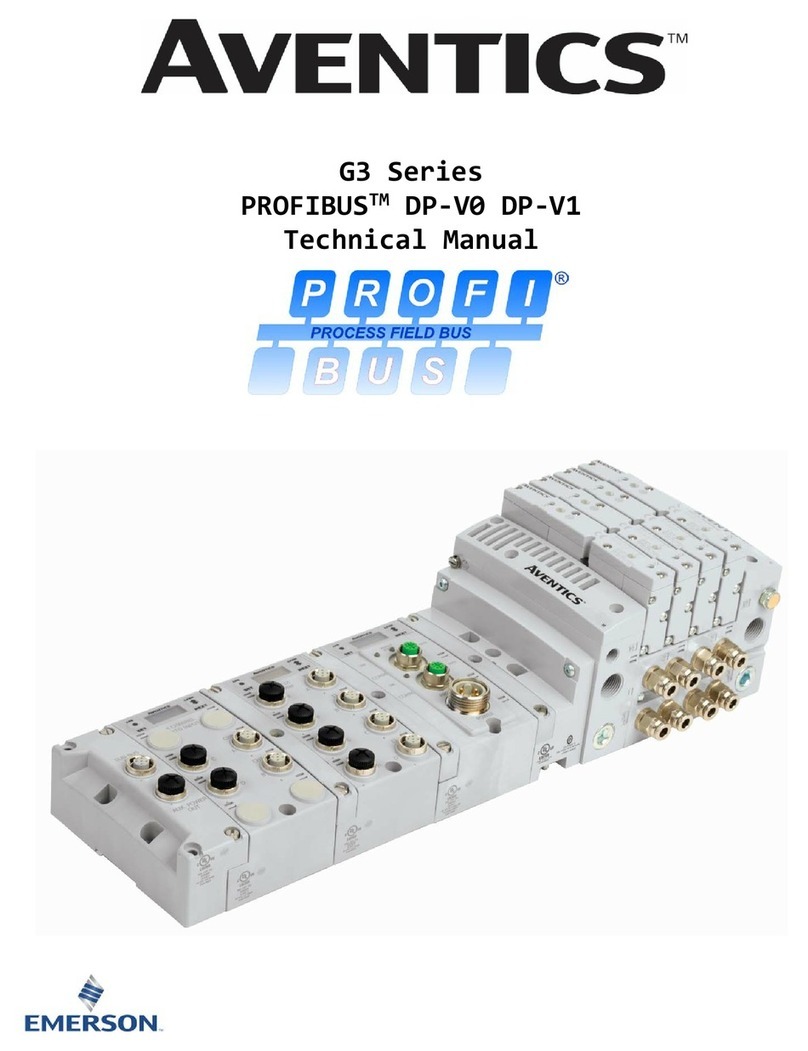
Emerson
Emerson Aventics G3 Series Technical manual
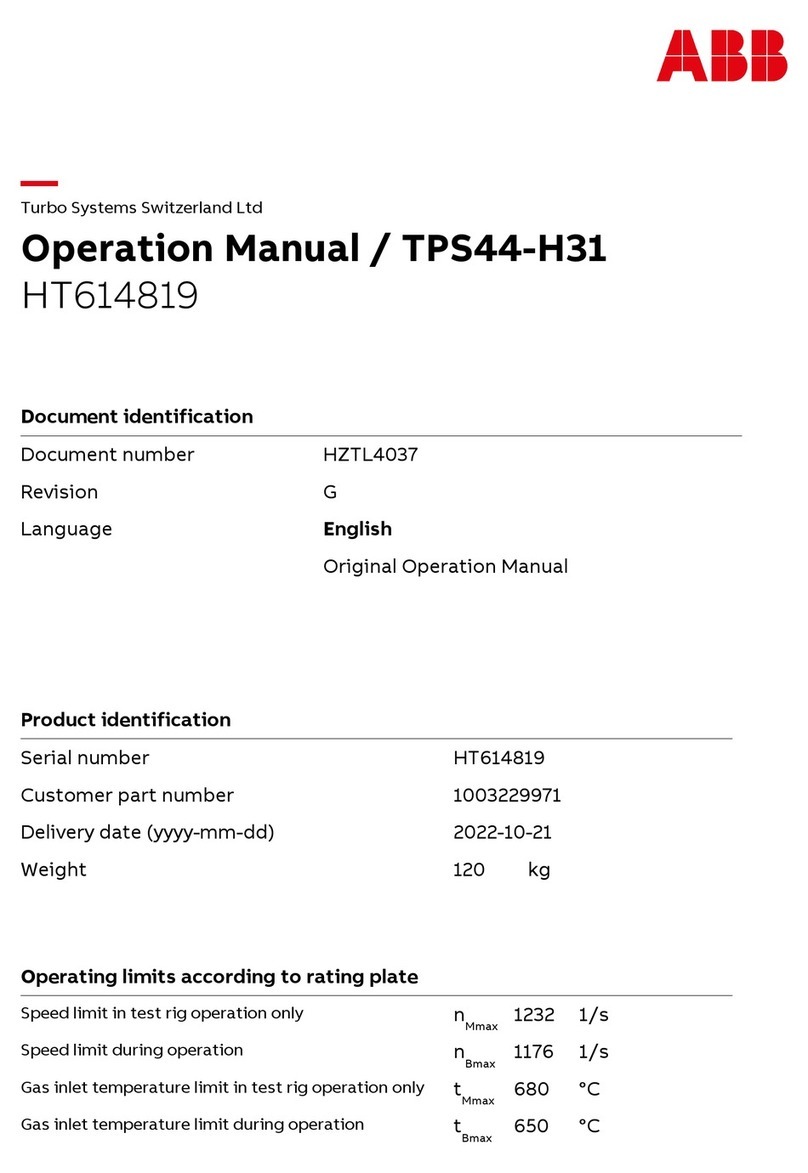
ABB
ABB HT614819 Operation manual
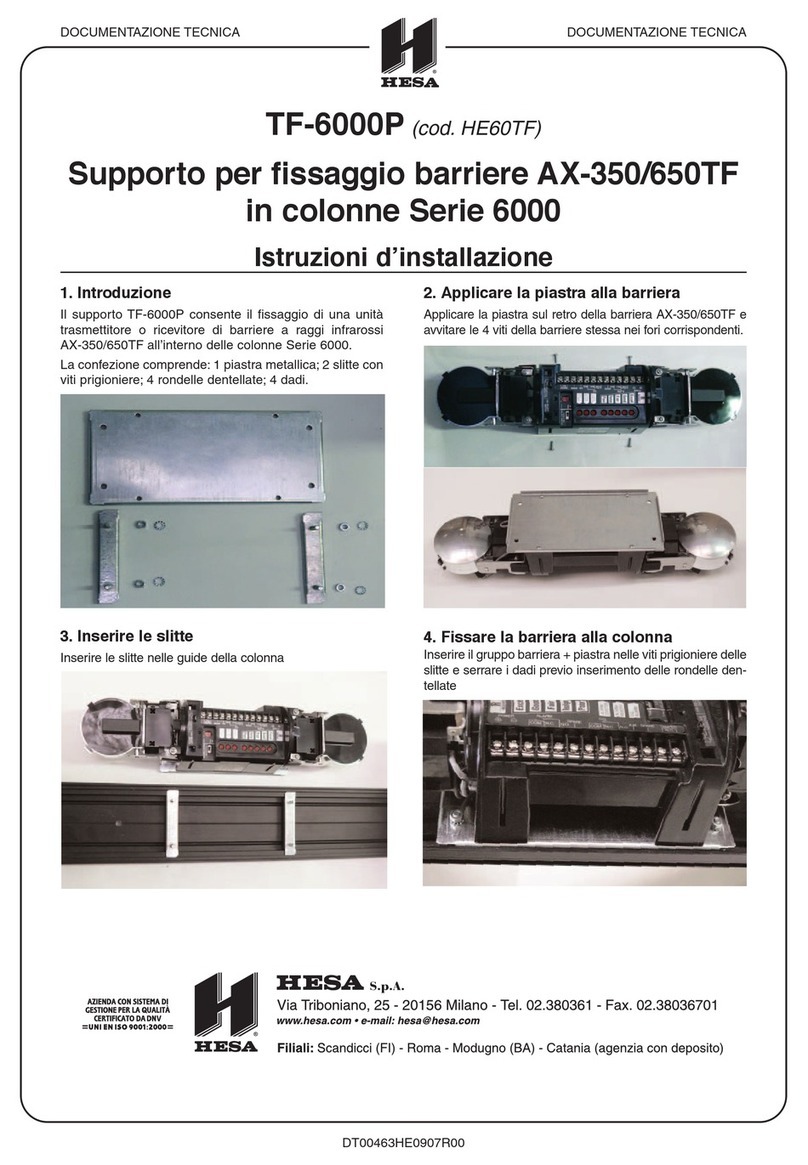
HESA
HESA TF-6000P installation instructions

dunkermotoren
dunkermotoren PLG Translation of the original assembly instruction
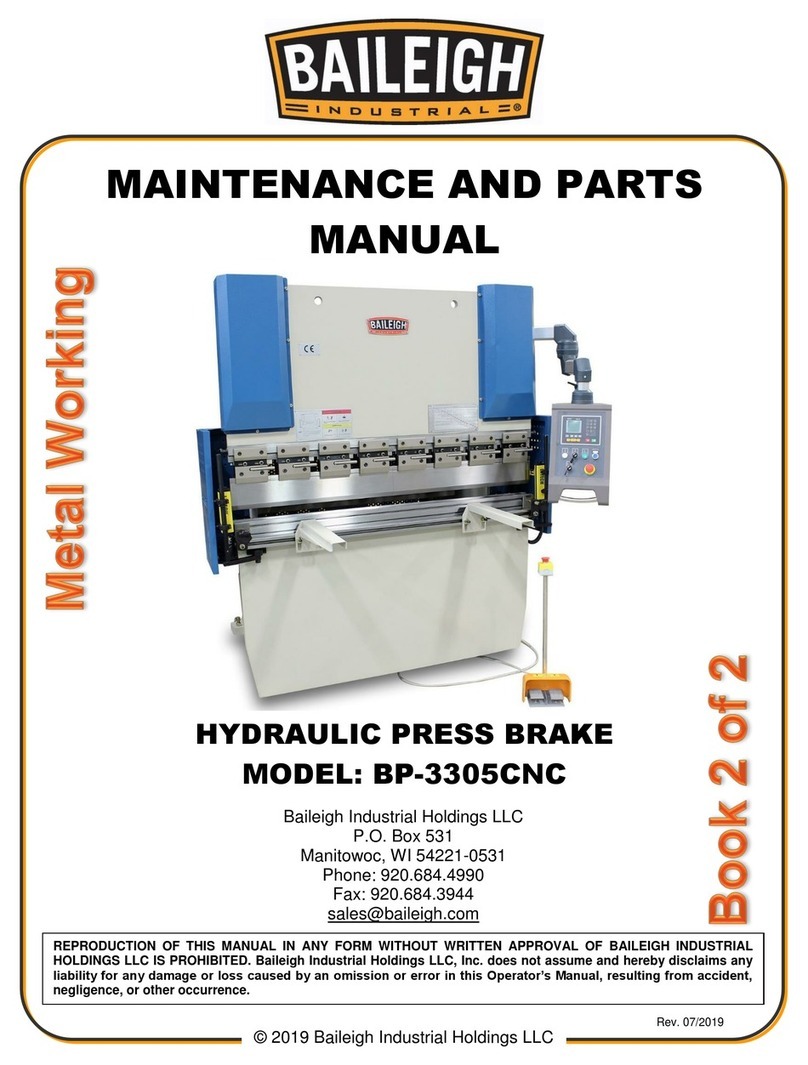
Baileigh
Baileigh BP-3305CNC Maintenance and parts manual
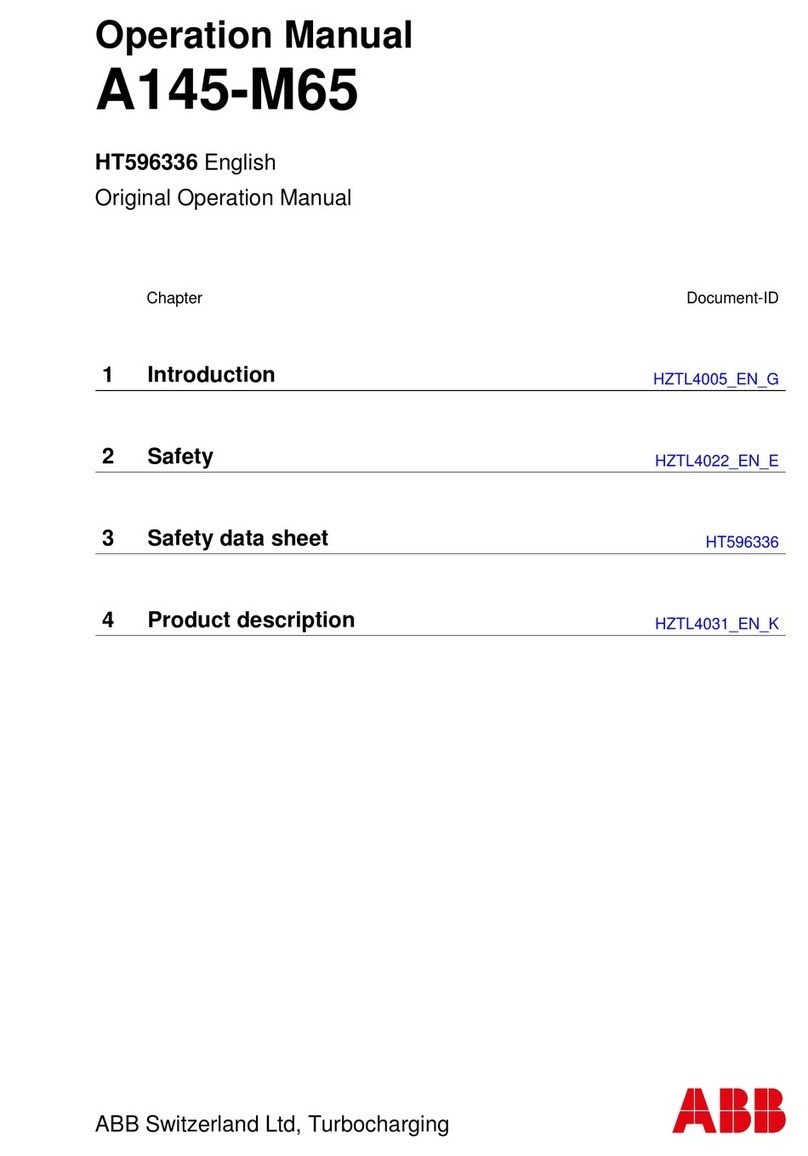
ABB
ABB HT596336 original operation manual
